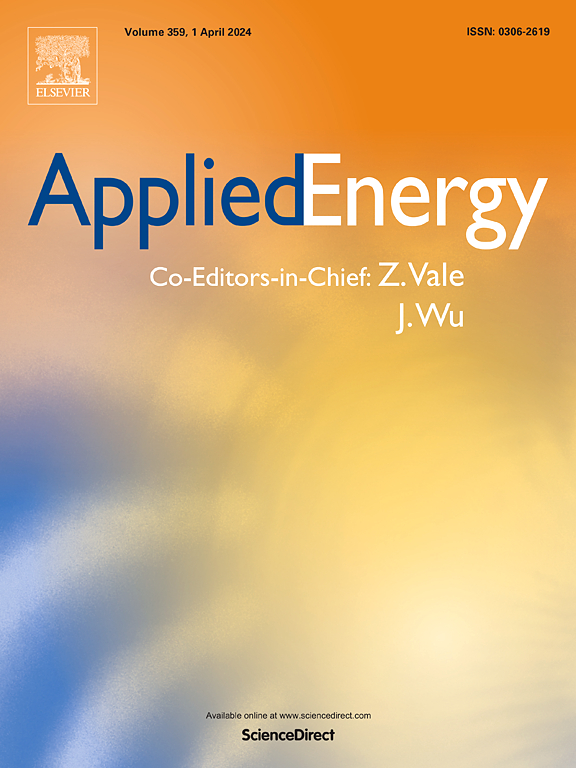A data-physics hybrid-driven layout optimization framework for large-scale wind farms
IF 10.1
1区 工程技术
Q1 ENERGY & FUELS
引用次数: 0
Abstract
The global trend of wind energy utilization moves towards building large-scale and remotely-located wind farms, while strategic layout optimization is crucial to improving the power generation of wind farms. However, large-scale wind farm layout optimization (WFLO) faces challenges due to complicated calculations involving the high-dimensional decision variables and the need to trade-off between wake model accuracy and efficiency. To address these issues, this paper proposes a novel data-physics hybrid-driven framework for layout optimization of large-scale wind farms. This framework attempts to integrate physical equations with variable parameters to guide the modeling of wake effects and further facilitate the layout optimization process. Specifically, the physics-informed dual neural network (PIDNN) model is proposed to estimate the wind velocity. This model incorporates a variable thrust coefficient into the Navier–Stokes equations through dual neural networks. Moreover, the gene-targeted differential evolution (GTDE) algorithm is employed to optimize the wind farm layout, which is particularly designed for large-scale optimization problems. Simulation results demonstrate that the proposed PIDNN can estimate wake velocity effectively. Furthermore, the proposed optimization framework outperforms competing methods, achieving the highest power generation.
大型风电场数据物理混合驱动布局优化框架
全球风能利用的趋势是建设大型和偏远的风电场,而战略布局优化是提高风电场发电能力的关键。然而,大规模风电场布局优化(WFLO)由于涉及高维决策变量的复杂计算以及需要权衡尾流模型的精度和效率而面临挑战。为了解决这些问题,本文提出了一种新的数据物理混合驱动的大型风电场布局优化框架。该框架试图将可变参数的物理方程整合起来,以指导尾迹效应的建模,进一步促进布局优化过程。具体来说,提出了基于物理信息的双神经网络(PIDNN)模型来估计风速。该模型通过双神经网络将可变推力系数引入到Navier-Stokes方程中。采用基因定向差分进化(GTDE)算法对风电场布局进行优化,该算法特别针对大规模优化问题而设计。仿真结果表明,所提出的PIDNN能有效地估计尾迹速度。此外,所提出的优化框架优于竞争方法,实现了最高的发电量。
本文章由计算机程序翻译,如有差异,请以英文原文为准。
求助全文
约1分钟内获得全文
求助全文
来源期刊

Applied Energy
工程技术-工程:化工
CiteScore
21.20
自引率
10.70%
发文量
1830
审稿时长
41 days
期刊介绍:
Applied Energy serves as a platform for sharing innovations, research, development, and demonstrations in energy conversion, conservation, and sustainable energy systems. The journal covers topics such as optimal energy resource use, environmental pollutant mitigation, and energy process analysis. It welcomes original papers, review articles, technical notes, and letters to the editor. Authors are encouraged to submit manuscripts that bridge the gap between research, development, and implementation. The journal addresses a wide spectrum of topics, including fossil and renewable energy technologies, energy economics, and environmental impacts. Applied Energy also explores modeling and forecasting, conservation strategies, and the social and economic implications of energy policies, including climate change mitigation. It is complemented by the open-access journal Advances in Applied Energy.
 求助内容:
求助内容: 应助结果提醒方式:
应助结果提醒方式:


